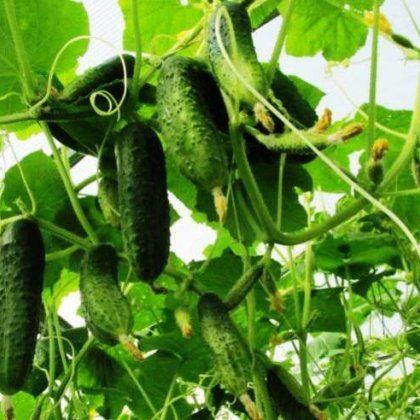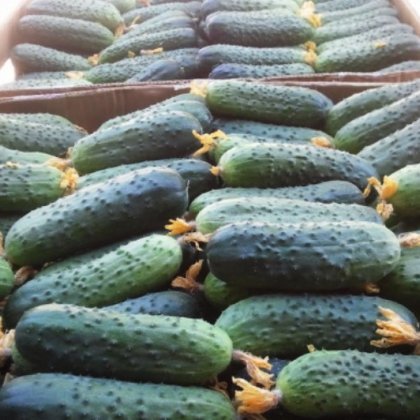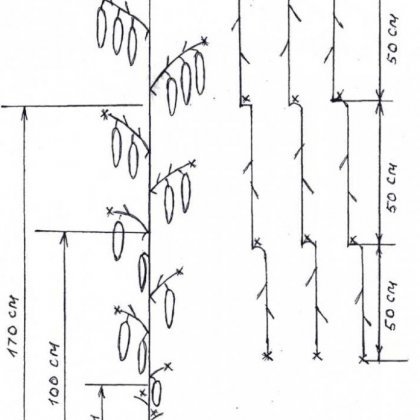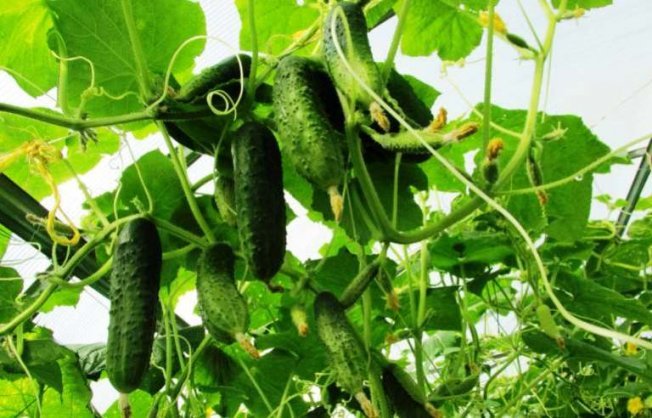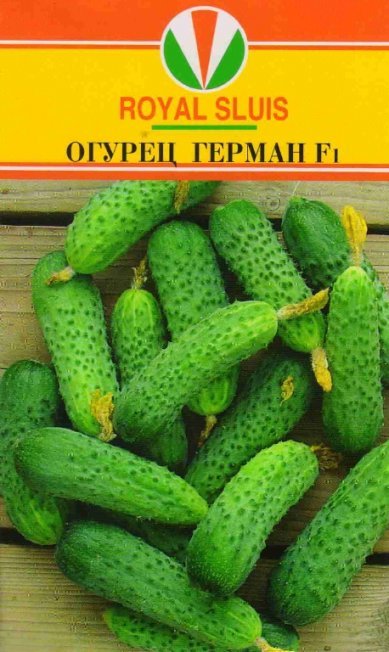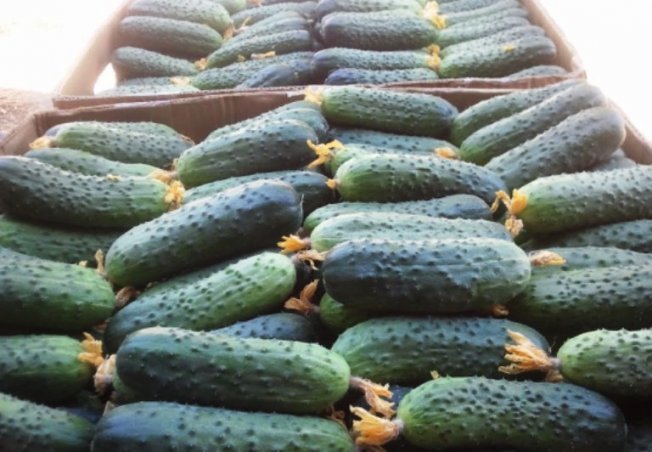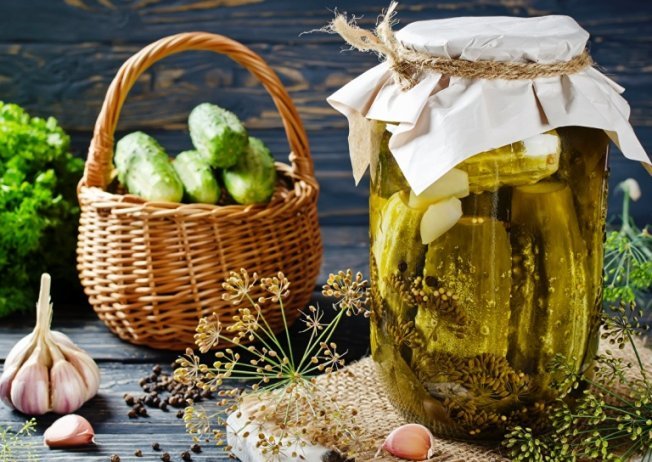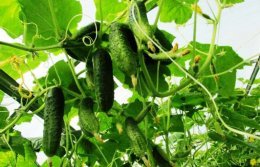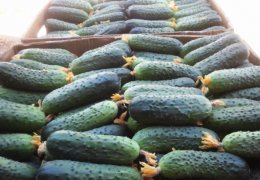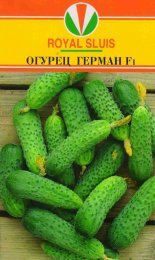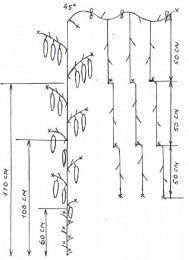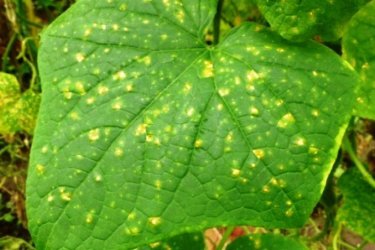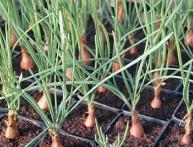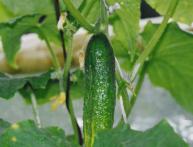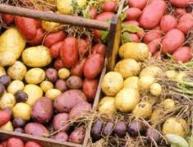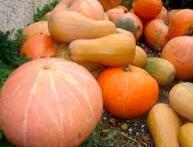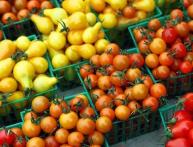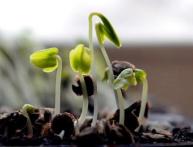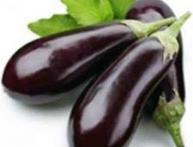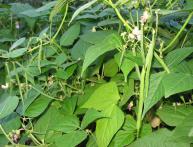German cucumber f1: description, photo, planting and care, reviews, features of the hybrid

Some varieties of vegetable crops, due to their characteristics, incredibly quickly win the sympathy of amateur vegetable growers. Among those that are especially popular, I would like to present the Dutch cucumber Herman F1, description, photos and reviews about it, understand how planting is carried out and what care fruit-bearing plants will require.
Content:
- Plant characteristics, photos, videos
- Productivity
- Description of fruits
- Disadvantages and advantages of the variety
- Where to plant, what soil to use for beds
- Sowing seeds, planting seedlings
- Formation of bushes
- How to water cucumbers
- What and when to feed
- Disease and pest control, preventive measures
- How to collect and preserve the harvest
- Use in cooking
- Reviews from those who grew
Plant characteristics, photos, videos
The Herman F1 cucumber has a high yield and is suitable for growing in greenhouse conditions and open ground. The variety is early, parthenocarpic, i.e. It does not require pollination by insects, which greatly simplifies the process of growing it in greenhouses.
The hybrid was bred by Dutch breeders. Since 2001, it has been recommended for cultivation in all regions of Russia, and since the same year it has been included in the State Register of Breeding Achievements. The variety has proven itself to be high-yielding, capable of active fruiting even in difficult weather conditions.
The variety is a tall variety; it can be grown under film, in greenhouses and in open ground.
The hybrid is early ripening; it takes only 38 days after emergence before fruiting begins. In case of insufficient lighting, the period can extend to 42 days.
Even more useful information about Herman F1 cucumbers can be found by watching the video:
Productivity
According to the indicators entered in the State Register, the yield of the hybrid ranges from 8.5 to 9 kg of greens per square meter of bed.
With proper care, experienced vegetable growers receive from 15 to 20 kg of fruits per square meter.
Description of fruits
The fruiting variant of Herman F1 cucumbers is bunched, with 5 to 8 ovaries observed on each node. About 95% of greens are marketable. The fruits look attractive, have a cylindrical shape, bright green color and medium tuberosity.
The weight of one fruit can reach from 70 to 90 g, length - up to 10 cm. There is no bitter taste in the fruits.
Disadvantages and advantages of the variety
Among the advantages of Herman F1 cucumbers, we note:
- fruiting in bunches;
- possibility of getting an early harvest;
- long fruiting;
- the ability to grow in greenhouses without pollination by bees;
- presentation of greens;
- resistance to scab, mosaic.
However, the hybrid has some disadvantages:
- relatively high cost of seeds;
- seedlings from seeds are weak and do not tolerate transplantation well;
- Too high or low temperatures can lead to reduced yields;
- coarser peel than salad varieties;
- low resistance to downy mildew and rust.
We will learn about growing the Herman F1 cucumber and its benefits in more detail by watching the video:
Where to plant, what soil to use for beds
Cucumbers are heat-loving plants, so before planting it is recommended to cover the bed with black plastic film; it will allow the soil to warm up. After sowing the seeds, arcs are installed over the rows and stretched with film or agrofibre. The shelter will protect the plantings from spring frosts.
In practice, planting cucumbers is done in two ways, seedlings and non-seedlings. Experts say that the seedling method is more rational, but growing from seeds is attractive due to its ease of planting and care.
To make the beds warm, use the following technology:
- preparation of beds begins in the fall;
- remove a layer of soil of 20 cm;
- add a layer of compost; about 1 bucket should be used per 1 sq. m of bed;
- add rotted manure, 2 shovels for every square meter;
- then they return the layer of fertile soil that was removed when digging the trench.
In the spring, after the soil settles, the processes of decomposition of organic matter begin in the trench, accompanied by the release of heat. After the soil has warmed up, they mark and make holes, add microfertilizers and ash, and plant cucumbers.
Sowing seeds, planting seedlings
In most cases, cucumber seeds from domestic producers are sold. If you manage to buy real Dutch seeds, you will not need to prepare them for sowing; they have already been processed accordingly, as evidenced by their color.
Untreated seeds are disinfected for half an hour in a 1% solution of potassium permanganate. Next, they are washed and wrapped in a piece of cotton cloth and placed in a warm place. After a few days, the seeds will sprout.
Recommended soil temperature during planting is + 14 +15 C.Considering that the Herman cucumber does not like either low or too high temperatures, you should choose a place that, if necessary, can be shaded or sheltered from the cold.
When using the seedling method of cultivation, it is recommended to use peat pots and plant seedlings in the ground with them. This option allows you to transplant plants with minimal trauma to the roots. The seedlings will take root easier.
You can increase plant productivity by using the double transshipment method. The seeds are first sown in containers 6-7 cm high, keeping a distance of 3-4 cm between plants. To maintain high humidity, the containers are kept under a film cover. At a temperature of +22 +24 C, which is considered optimal. It will take approximately 6 days for seedlings to emerge in closed ground.
After two true leaves appear on the seedlings, they are picked, i.e. transplanted into individual pots, while the stem is immersed in the soil to the level of the cotyledons; the submerged surface will over time acquire additional roots.
After 3-5 true leaves appear, the seedlings are planted in the ground.
Recommended planting pattern for the German F1 variety: 30-40 cm between bushes, row spacing - at least 50 cm.
When sowing seeds in open beds, you must remember that it will be much more difficult to protect the plantings from spring frosts; there is also a threat that fragile plants will get sick more often; the harvest, in any case, will be obtained later.
Formation of bushes
Since Herman F1 is a hybrid with a bunched type of ovary formation, the stem is formed as follows:
- the axils of the 4 lower leaves are freed from shoots and ovaries, this will lead to the formation of strong roots;
- in the axils of the 5th and 6th leaves, 1 ovary is left, but the shoots are removed;
- 2 ovaries are left in the axils of leaves 7 to 10;
- then all the ovaries can be left in all the sinuses;
- When the top reaches the edge of the trellis, the plant is wrapped around the edge twice and pinched.
Experienced vegetable growers prefer the method of growing cucumbers on trellises; it allows the bushes to be well ventilated and does not allow the fruits to come into contact with the ground, i.e. the possibility of contamination and rotting of fruits, and damage by rodents is excluded.
Since there are many options for arranging trellises, it is not difficult to find a budget-friendly one that is suitable specifically for your site.
How to water cucumbers
Watering Herman F1 cucumbers is done with settled water heated in the sun. Water as needed, during dry periods - every other day; when precipitation occurs, reduce the frequency of watering.
What and when to feed
Any planting option requires proper organization of cucumber care, systematic watering and fertilizing.
The first fertilizing intended for feeding seedlings is carried out after the appearance of the first true leaf. Water the bushes with a solution of superphosphate (1 g per 1 liter of water) and ammonium nitrate (0.5 g per 1 liter).
For the second feeding, you will need to prepare an aqueous solution of mullein with the addition of potassium sulfate.
Ten days after the appearance of the second leaf of the plant, add a mixture of 1 g of ammonium nitrate and 2 g of superphosphate dissolved in 1 liter of water.
When planting in the ground, seedlings are watered with Agricola forward solution, for which 2 tbsp are diluted in 10 liters of water. spoons of the drug. A week later, the plant is sprayed with a solution of the same product, but 1 tablespoon of the drug is taken per 10 liters of water.
During the flowering period, it is advisable to use fertilizers prepared on the basis of an infusion of bird droppings, mullein, and wood ash.
After the ovaries appear, the plants require fertilizing consisting of a mixture of superphosphate (25 g), potassium chloride (15 g), ammonium nitrate (10 g), dissolved in 10 liters of water.
During the fruiting process, plants can be fed with infusions of mullein and ash.
To increase the yield and improve the quality of greens, boric acid (about 0.5 g per 10 l of water) and potassium sulfate (0.3 g per 10 l) can be added to liquid fertilizers.
The appearance of irregularly shaped round fruits with thin tails indicates a lack of potassium, i.e. Wood ash should be added to the fertilizer.
For weak vines and pale leaves, fertilizing is enriched with nitrogen fertilizers, i.e. introduce ammonium nitrate (a tablespoon per 10 liters of water).
Disease and pest control, preventive measures
The most common disease of cucumbers is downy mildew, or powdery mildew. Initially, it appears as yellowish spots on the outer part of the leaves. On the inside, in the affected areas, a grayish coating appears. Over time, the leaves dry out and die completely. Ultimately, the entire plant suffers and dies from the disease.
Treatment of bushes at the initial stage can be carried out with the biological product Planriz. If the disease has affected the entire plant, then spraying with Oxychrome or Acerid fungicides will be more effective.
Many diseases caused by fungi (ascochyta blight, anthracnose, etc.) manifest themselves in similar symptoms in the initial stages. All these ailments are united by one name - rust, since the causes of their occurrence are similar, they are all treated in the same way as peronosporosis.
If there is an increased risk of infection by pathogenic fungi, it is recommended to treat cucumbers with a one percent solution of Bordeaux mixture; the treatment should be repeated after 10 days, but no less than a week before the expected start of fruiting; spraying is stopped. A safer option is dusting the sheets with wood ash.
Spider mites can cause significant damage to cucumber beds. It is difficult to notice the pest right away; the arachnid parasite is too small, settles on the back side of the sheets, and entwines them with cobwebs.
On the upper part of the leaf, small whitish dots become noticeable, which increase to the size of spots, the leaf turns yellow and dries out. As a result of the activity of spider mites, the plant loses leaves, flowers, and ovaries. The danger of the mite is that it carries dangerous infections that can lead to the death of plants.
To combat ticks, we can recommend an infusion of garlic. To prepare, grind 300 g of unpeeled garlic cloves, pour in 2 liters of water heated to + 60 C, and leave for a day. Then filter the solution, add water to make 10 liters, dissolve 25 g of laundry soap.
The leaves are sprayed with the infusion; it is very important to treat the back side of the leaves. The procedure for planting and caring for the German f1 cucumber, the description, photos and reviews of which we are considering, is not at all complicated. Attentive attention to the condition of the plant will help to identify diseases at a stage when they can still be cured.
How to collect and preserve the harvest
For harvesting, you should set aside time early in the morning or in the evening, after sunset. Zelentsy are the most resilient during this period. You can keep the collected fruits in the cellar or refrigerator; you should not leave them in the sun.
Grown cucumbers should be collected daily, or at least every other day. Infrequent harvesting will lead to a decrease in fruits; the plant will spend all its energy on the development and ripening of seeds in overgrown specimens.
To remove cucumbers from the stem, it is advisable to use pruning shears or a sharp knife; careful use of the tools will reduce the risk of injury to the bush.
The duration of fruiting of the Herman F1 cucumber is limited only by weather conditions. If the climate in the area where you live allows it, then it is best to plant in 2 or even 3 steps, using greenhouses. In this case, the question of storing fresh fruits will not arise, at least until September.
Picked greens are stored in the refrigerator; you can extend the shelf life by wrapping the fruits in paper. If the temperature is slightly above 0 degrees C, then with a humidity of 95%, cucumbers can remain fresh for about 3 weeks.
There is another option, when picked greens are placed in a saucepan with the stalks down, and a little water is poured into the bottom. The water in the pan is changed daily. The shelf life in the refrigerator will also be approximately 3 weeks.
Use in cooking
In cooking, German f1 cucumbers are used both fresh and canned.
The relatively thick skin of greens prevents moisture loss, so even after long-term storage in the refrigerator, the fruits can be used for canning and pickling.
Reviews from those who grew
Ivanovskaya Anastasia, Tikhoretsk
German F1 planted cucumbers last year for the first time, as a test. The yield was good. They were practically not eaten fresh; the skin was thick. Everything was used for pickling and salting.I must say that when canned they are excellent, crispy and dense. I liked it, this year I plan to sow two rows, directly into the ground, then I will cover it with agrofibre until the shoots appear.
Yana, Stavropol region
We have been planting German cucumbers at our dacha for several years now, we are pleased with the yield of the variety, we have to shape the bushes, but it is worth it. The investment of time pays off in abundance of fruits. Our cucumber beds are under drip irrigation, so we haven’t had any bitter greens in a single year. We eat fresh cucumbers and can them, it turns out great.
Tamila Antonovna, Saratov region
We adapted to growing the Herman cucumber in a greenhouse; it’s good that it doesn’t require pollination. It bears fruit for a long period, from spring to autumn with fresh cucumbers. Our greenhouse is heated, so we don’t have to spend money on fresh vegetables. The Herman hybrid, of course, requires care and fertilizing, but if everything is done in a timely manner, the yield is very high.


